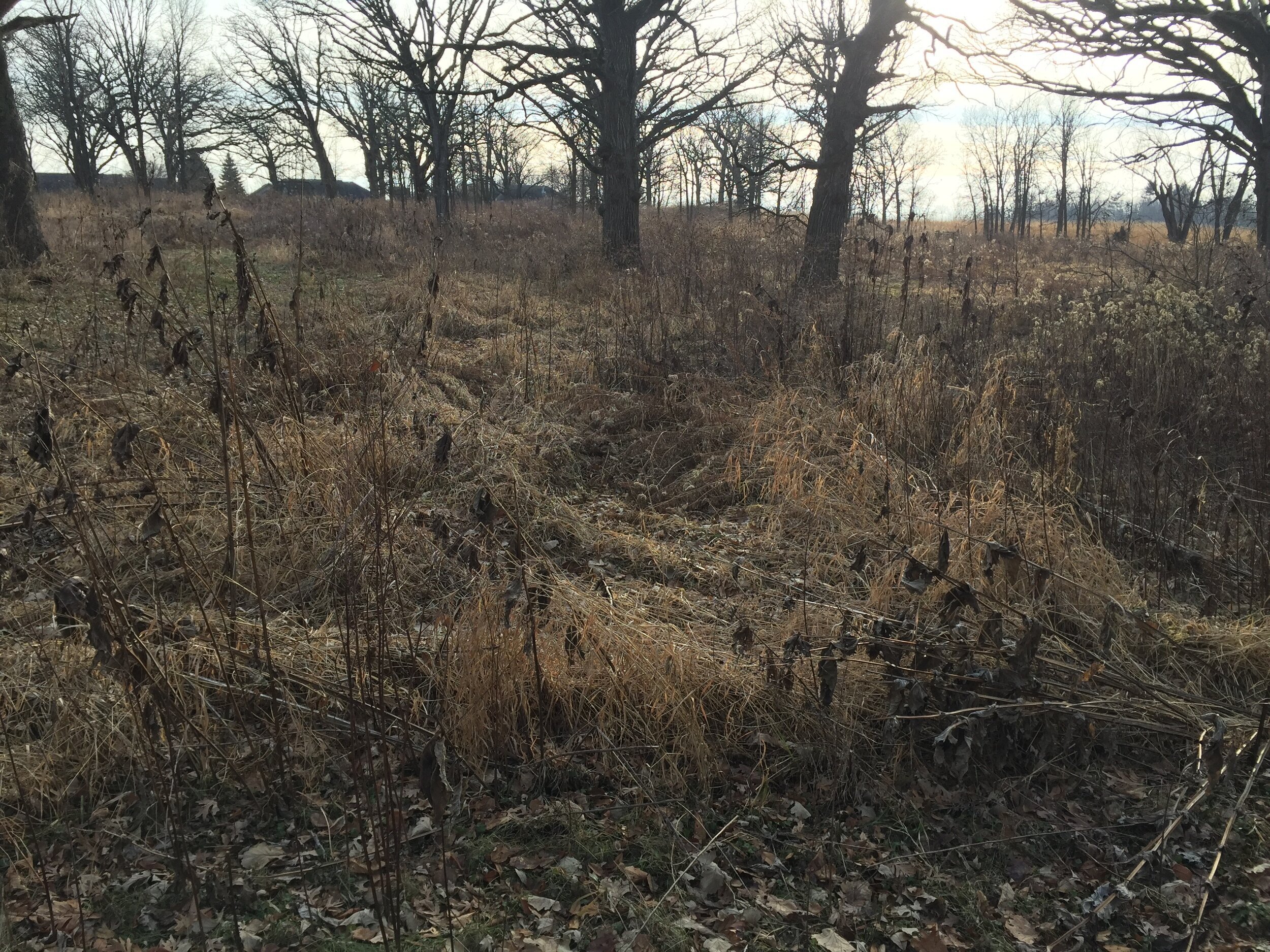288 South Indian Mound Parkway
by Michael P. Guéno
It was early spring but already it was hot. A small band of extended relatives labored together, sweating in the humid air beneath the oaken canopy. Side by side, the entire community toiled through another exhausting day caked in dirt and sweat. They heaved basketfuls of soils, hauled from sites up to a day away, upon a rising mound under the guiding direction of their elders. Though the task strained backs and, occasionally, social relations, the cooperative labor affirmed the bonds of family and community for those who willingly sweat to bring the dirt for the emerging effigy mound. That day the workers labored to erect this latest effigy mound within the presence of the larger community and the layers of meaning for the day’s activities. The bones and effigies of ancestral spirits surrounded them, silently reminding the people of their place in the cosmos and grounding the community in this space.
Today, in a small park, tucked away behind the homes of a recent neighborhood development, thirteen earthen mounds stand as largely forgotten remnants of a Native American culture that once dwelt in the space now identified as Whitewater, Wisconsin. A small but passionate community of volunteers previously ensured the establishment of the Whitewater Effigy Mound Preserve to protect these Native American artifacts and inspire local curiosity into the meaning of these architectural wonders. Now, what were once recognizable as mounds appear notable only as areas of especially dense vegetation. The once hallowed lands of Native peoples have become condensed and constrained, sequestered between visions of suburban backyards (abandoned trampolines, latticed arches that lead into barren gardens, and empty lawns strewn with the plastic detritus of playful children) and a now fallow field, stripped and prepared for the onset of winter.
Here a turtle and bird effigy mound and two linear mounds lie occluded by underbrush and the encroaching suburban settlement.
The Preserve contains thirteen mounds built between 700 and 1200 CE. Three clearly conical mounds are scattered throughout the complex. Two elongated conical mounds and three linear mounds, varying in length between 90 and 195 feet, appear placed without any recognizable pattern. Two of these mark the southern and eastern edges of the complex, but the mounds otherwise eschew any attempts to generate cardinal or celestial correspondences. It is the five mounds identified as effigies that give name to the preserve and first drew the attention of American pioneers. Like other effigy mounds, these long, low earthen constructions appear to represent the form of some creature or being. For over a century, professional and local observers have variously recognized these mounds as a range of plant, animal, or spirit beings.
For those who know what to look for, and have benefited from aerial topographic maps, walking the mound complex still evokes an intimate experience with the land and inhabitants of the space. I visit this place often. I know it is anything but empty. This once sacred site still bears the embodied presence of peoples of the past. Within the mounds, the deceased may lie as extended burials or bone bundles cleaned of flesh. Some mounds might stand atop ritual spaces or contain nothing. The ultimate purpose of the mounds, what they represented, and what burials or other elements might lay beneath remain uncertain. Without a more elaborate understanding of the visual culture and cosmology of their creators, interpretations remain conjecture.
An effigy mound of a soaring raptor lines the margins of a farmer’s field.
Even obscured by uncertainty and undergrowth, these mounds stand as testament to a historical transformation of religion and identity. Effigy mounds were expressions of a religion and culture that emerged between 700 and 900 CE to draw together local Middle and Late Woodland communities throughout the upper Mississippi River drainage area and unify them in opposition to the mounting threat of Mississippian peoples beginning to trickle into their ancestral lands. The construction of mounds in effigy forms helped to unite and differentiate native populations from the intrusive, linear mound-building Mississippians. This “effigy mound culture” spread throughout Wisconsin and extended into proximate areas of adjacent states. These all but forgotten mounds were erected as part of that cultural reformation and still proclaim the religiously-saturated place of this land’s early inhabitants. With the diminishment of the unifying Mississippian threat in 1200, the effigy mound culture settled into increasingly individuated agricultural villages and embraced a new lifeway that reflected their changing concerns and priorities.
The effigy mound culture transformed into the Oneota and the Oneota into the Ioway and Ho-Chunk peoples. These descendent peoples often viewed effigy mounds as remnants of a distant past or geographical curiosities easily forgotten. Now, for most, this site is empty. Though acknowledged by an adjacent street name, my students who grew up on Indian Mound Parkway never knew why the street was so named. It is a void. A space of reflexive commemoration that serves as compartmentalization. A memetic sinkhole that exists at the margins of quotidian life so that, by existing, current residents may forget and absolve themselves of the ongoing colonialism of American life. Today, the only footsteps other than mine in the muddy soil of the Preserve speak of a kid who recently ran in erratic circles around and over the mounds before retreating to their back-yard habitat.
Michael P. Guéno is an Associate Professor in the Philosophy and Religious Studies Department at University of Wisconsin – Whitewater. After graduating with a BA from Louisiana State University, he went on to receive his MA and PhD in Religion from Florida State University. He specializes in American religious history and Native American religions, in particular. He has researched and written on a range on Native American groups and topics – from the Effigy Mound cultures of Wisconsin to the Pueblo religions of colonial New Spain to the relationship between Native American religions and contemporary US legislation. He can be found on Twitter @michael_p_gueno.



